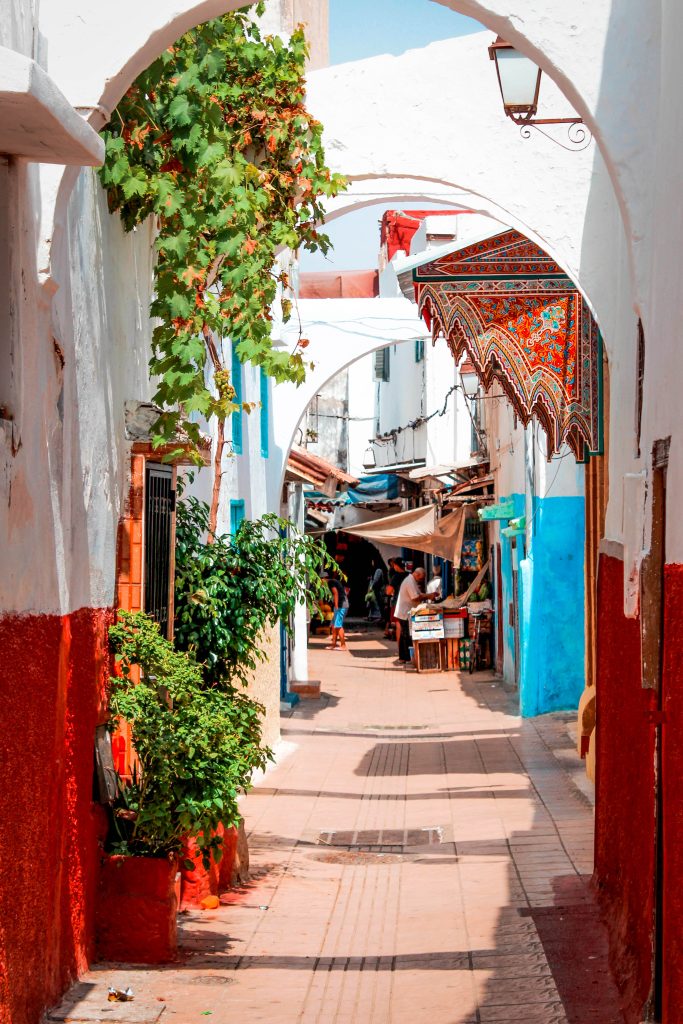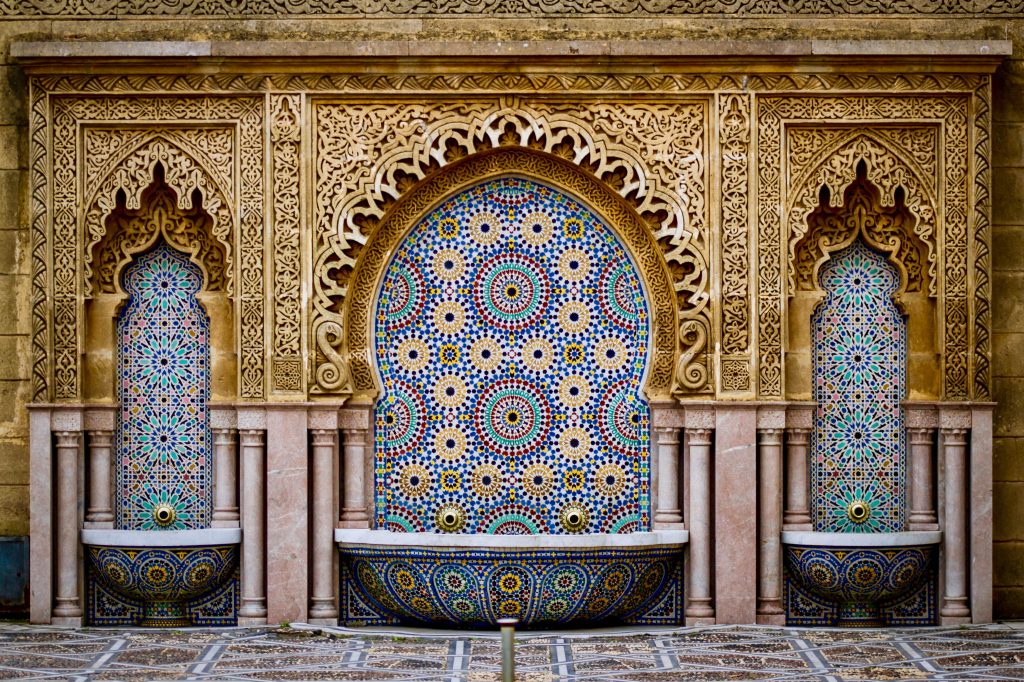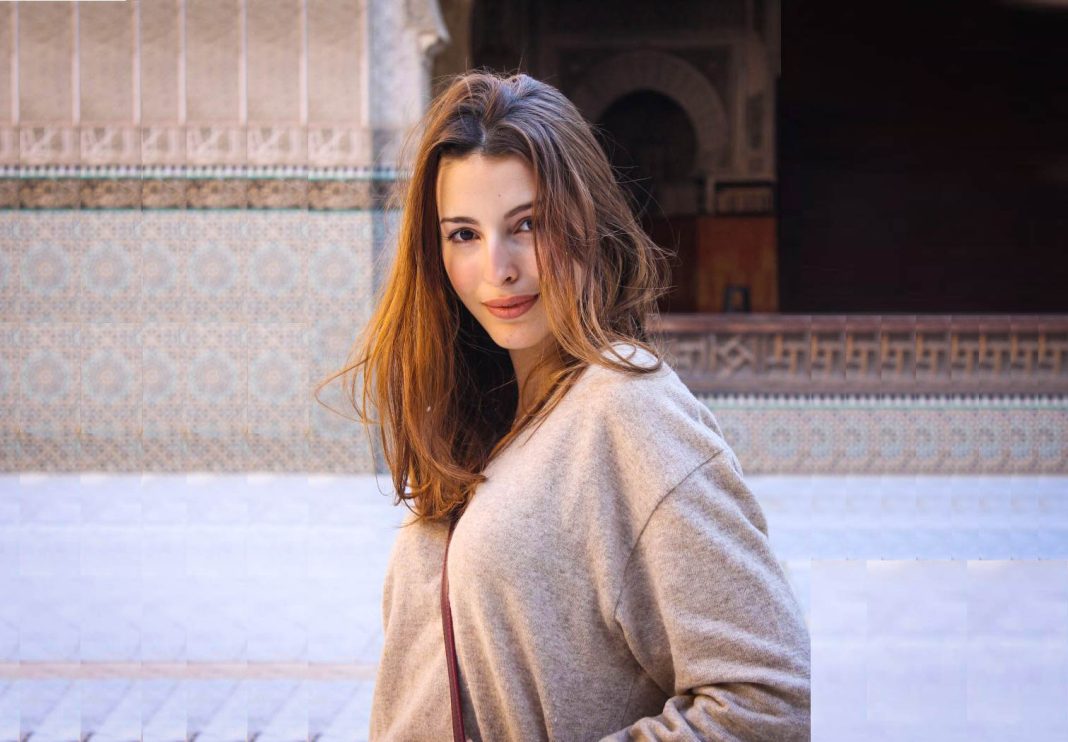Architects become famous for their inventive structures and controversial designs. But for Rajae Haissouss, satisfaction comes from adding value to the community. Aspiring to use her talents for good, this Young Leader is raising the profile of sustainability and stakeholder engagement in architecture through her work with the African Innovation Network. Here she tells us why it’s important for people on the fastest-growing continent to work together on the solutions that are unique to African cities.
Being a pioneer can be lonely work. Early on in her studies at the National School of Architecture in Rabat, Rajae Haissouss realised she wanted her career to be defined not by national renown like her peers, but by the impact she could bring to people’s lives. “No one really shared the same vision as me,” this Young Leader from Morocco tells us.
Further entrenching the divide, she noticed that the educational system was still “too occidental”, focusing on western innovations and technological developments. African cities have their own challenges. This left Rajae puzzled: how could she make a difference, and who with?
A United Africa
In 2021, Rajae participated in the international Kaira Looro Architecture Competition. This annual event for talented young architects, engineers, and designers held in Senegal promotes the use of the built structure to address Africa’s humanitarian and climate challenges, such as gender equality, malnutrition, and the needs of children. “I felt like this kind of project would have a real impact on the community,” Rajae reminisces.
Extensive research into the site where the final product would be built led our Young Leader to join the dots: Senegal faces the same problems as her native Morocco.
“We live the same problems, we have the same economic, social, and environmental challenges. And that’s how I really felt it would be very interesting to have a common vision to all the African countries, to work on and to merge our forces to overcome these obstacles.” This understanding of the power of unity and collaboration has shaped our CityChanger’s journey ever since.

A Connected Africa
Like cities in many African countries, Rabat’s rich and poor neighbourhoods straddle one another. Seen side-by-side, the comparisons are stark. Still, as the capital, Rabat has an impressive array of infrastructure, Rajae knows other urban areas are not so fortunate.
“When we travel to other cities in Morocco, we tend to see the urban differences, the territorial inequality between cities.”
Rajae feels she has a responsibility to rectify this: “I love to work on how to make the infrastructure accessible for everyone here in Morocco.” Especially, she says, in the “forgotten Morocco” – the smaller towns and cities that are left behind development-wise.
Through architecture internships and volunteering positions, Rajae found her tribe: multidisciplinary teams that shared a socially beneficial outlook. It culminated in her joining the Africa Innovation Network; a call to arms for architects and planners.
Africa Innovation Network
The objectives of this youth-led organisation are straightforward enough:
- Bring together architects and urban planners from all over Africa to share sustainable values with different stakeholders.
- Raise awareness of and present solutions to regional urban challenges.
- Encourage members to conceive initiatives and projects that tackle the issues.
It’s important to represent the range of Morocco’s cities and their influencers. This Rajae captures through her editorial role for the African Cities magazine, a platform designed to “co-construct a vision of how African cities should look like”.
Our accomplished architect is also preparing to film for the Moroccan edition of the organisation’s documentary series, African Cities Network. This will be the third, following Cameroon and Côte d’Ivoire and aims to analyse urban dynamics and experiences to see how local challenges can be overcome to create more resilient and sustainable cities.
Rajae tells us that the Network has managed to hook “thousands of people from academia, governments, and civil society”, allowing them to “share some of the most innovative projects and initiatives that are taking place in Africa so that we can inspire other architecture and urban planning students to take action”. It turns out, she’s far from alone in her vision.
Territorial Inequalities
What motivates an architect to become a CityChanger?
“I am very attached to the spirits of a city,” Rajae tells us. She likens the cultural heritage and historical background of Rabat to another city she loves:
“In Istanbul, I really felt how dynamic, how inspiring a city can be for anyone who visits.”
What she found most striking in the Turkish capital was the care shown to the monuments, the historical sites, and significant cultural buildings. The stunning vistas of mosques and museums attract visitors. Rajae wants the same for the beautiful but undervalued architecture in her native Rabat. Not just for aesthetic purposes, but for the benefit of citizens.
Tourism is one of Morocco’s main income streams, generating around 4% of GDP in 2020 and creating more than half a million jobs. Investing in what Rajae called the city’s “image capital” has the potential to improve the quality of life for the citizens.
“Once we attract tourists, once we invest in our image capital in different cities, of course, it makes cities more sustainable”. It promises economic benefits for those struggling most, such as craftspeople selling their traditional wares in the marketplace.

A Digital Africa
Tradition shouldn’t be ignored in the built environment either. Rajae notes how low-tech sustainable solutions have been used for structures for centuries, from houses to sewerage systems. Building methods, like thick walls, inner courtyards, and passive shading are practical and visually stunning.
That’s why this CityChanger challenges us to consider the opportunities that African cities, their heritage, environment, and fabric, offers us to solve local challenges, which modern technology may not.
“It hasn’t really found its foundation in our local heritage and our local context. It doesn’t really inspire us to think about our local problems or our local challenges.”
Our Young Leader strongly believes tech will “help us capitalise a lot of information that will serve city management” efficiently, but it needs to be customised for the region. Without the right information, she continues, we cannot identify the right solutions.
One of the People
If a city is ever to overcome its socio-economic challenges, it’s the voices of the citizens that need to be heard. The magazine, the documentary, the entire African Innovation Network is constructed on stakeholder involvement.
People from different cities, or with different backgrounds even on neighbouring streets, can see the world completely differently. Our Young Leader says: “They have a different mindset, daily different problems.”
Rajae confesses that her ability to be “very sociable with everyone, and especially here in Morocco, with every category of people” is so important to getting people to interact with the Network.
“You should look like you are very grounded, talk the same way with the same words. And that’s how they will embrace you. And they will try also to work with you on any project or initiative. They will be more collaborative.”
The real culprits of not understanding others, she adds, are the well-educated. Rajae has seen how they often act too superior, and it gets them nowhere.
An Architect’s Advice
As long as you know why you want to make a change – why the impact is important – “there is nothing that can stop you”. Keep working at it.
“No matter how impossible it can seem, follow your vision. Embrace it, and you will definitely make the most of it.”
Those are words of encouragement from someone who has lived them. Someone who has doubted their own path – felt set apart from their peers – and gone on to find her place, purpose, and confidence in people with the same mindset.
“It is very important to have a support system and like-minded people with whom you can work together on bigger projects and envision the same vision.”
Rajae went from feeling alone in her vision to being part of a continent-wide network. There’s still a lot of work to do, but, she says, “it became much easier”.
Africa from an Architect’s Perspective in a Nutshell
Africa is vast and diverse, yet many of its cities share common challenges. So, it’s best to share the solutions, too. We can do that by educating the next generation of architects about how to ‘build out’ the inequalities rife in the continent’s urban communities.
Rajae Haissouss’ work with the African Innovation Network is instrumental to connecting the people who live in and shape these cities to determine the best sustainable solutions. And, maybe most importantly of all, it ensures no future architects will feel isolated and deterred ever again by their vision for the city of the future that makes an impact where it matters.


